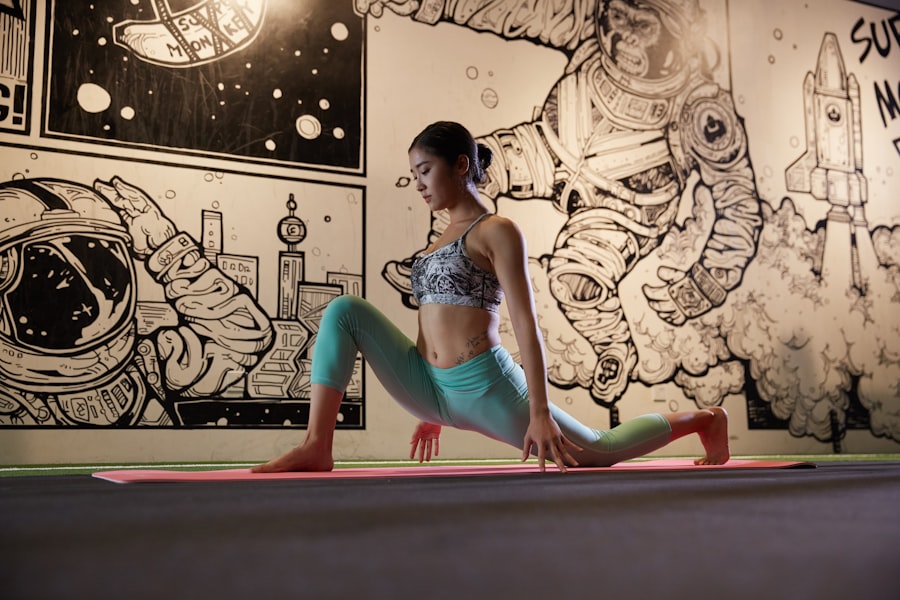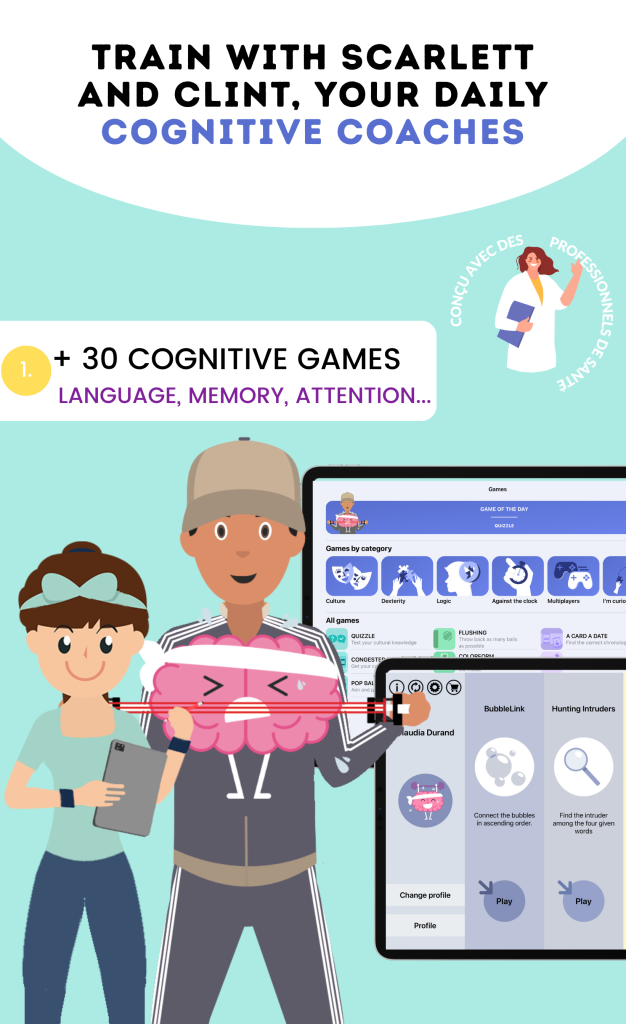The Importance of Physical Activity in Maintaining Cognitive Abilities
Physical activity plays a fundamental role in maintaining and improving cognitive abilities. Numerous studies have shown that regular exercise can have a significant impact on brain function, especially in older adults. Indeed, engaging in physical activities stimulates blood circulation, which promotes the supply of oxygen and essential nutrients to the brain.
This process contributes to the creation of new neural connections, thereby strengthening cognitive abilities. Furthermore, physical activity is often associated with a better mood and reduced stress, two factors that also influence cognitive performance. By reducing anxiety and depression, exercise allows individuals to focus more and improve their memory.
Thus, the link between physical activity and cognitive abilities is not only biological but also psychological. Our guide to support individuals suffering from Multiple Sclerosis can be found at the following address: https://www.dynseo.com/la-reeducation-cognitive-lorsque-lon-est-atteint-dune-sclerose-en-plaques/.
Summary
- Physical activity is linked to improved cognitive abilities
- Exercise has positive effects on the brain
- Exercise can prevent cognitive disorders
- Physical activity can improve memory
- Exercise enhances concentration and attention
Positive Effects of Physical Activity on the Brain
The beneficial effects of physical activity on the brain are numerous and varied. First of all, regular exercise promotes the release of neurotransmitters such as serotonin and dopamine, which are essential for mental well-being. These chemicals help regulate mood and reduce symptoms of depression, which can indirectly improve cognitive functions.
Moreover, research has shown that physical exercise can increase the size of certain regions of the brain, particularly the hippocampus, which is crucial for memory and learning. For example, studies have revealed that individuals who engage in endurance activities, such as running or swimming, show a significant increase in hippocampal volume compared to those who lead a sedentary lifestyle. These structural changes are associated with improved cognitive performance.
Interestingly, the impact of exercise on the brain is not limited to physical changes. Indeed, studies have also shown that physical activity can improve neural connectivity, facilitating communication between different regions of the brain. This can translate into a better ability to solve problems and make decisions.
- Release of beneficial neurotransmitters
- Increase in hippocampal volume
- Improvement in neural connectivity
- Facilitation of problem-solving
Prevention of Cognitive Disorders through Exercise

Physical exercise is also a powerful tool for preventing age-related cognitive disorders. Longitudinal studies have shown that individuals who regularly engage in physical activity have a reduced risk of developing neurodegenerative diseases such as Alzheimer’s disease. Indeed, exercise helps maintain vascular health, which is crucial for the proper functioning of the brain.
Additionally, physical activity can also slow cognitive decline in individuals already experiencing mild disorders. For example, tailored exercise programs have been implemented in certain institutions to help patients maintain their cognitive abilities while improving their physical condition. These initiatives demonstrate that exercise can be an effective complement to traditional medical treatments.
It is essential to emphasize that physical activity should not be viewed as a chore but rather as an opportunity for socialization and community engagement. Programs like “SCARLETT” encourage older adults to participate in adapted physical activities, which not only promote their physical condition but also their mental well-being.
By integrating group activities, participants can also benefit from mutual support, which enhances their motivation to stay active. This can include dance classes, group walks, or yoga sessions, offering a holistic approach to cognitive health.
Improving Memory through Physical Activity
One of the most notable benefits of physical activity is its positive impact on memory. Studies have shown that individuals who engage in regular exercise exhibit better episodic memory, which is the ability to recall specific events from their lives. This is particularly important for older adults who may begin to experience memory difficulties.
For instance, researchers found that participants in an aerobic exercise program had a better ability to retain and manipulate information compared to those who did not exercise. These results highlight the importance of integrating physical activity into our daily routine to support our memory functions.
It is also interesting to note that activities that combine physical effort and cognitive stimulation, such as board games or group activities, can have an even more significant impact on memory. These social interactions, combined with exercise, strengthen neural connections and enhance overall cognitive abilities.
Moreover, research has shown that memory and learning exercises, when practiced alongside physical activities, can create beneficial synergies. For example, learning a new dance or sport can stimulate both memory and physical condition.
Enhancing Concentration and Attention
Physical activity is not only limited to improving memory; it also plays a crucial role in enhancing concentration and attention. Research shows that even a short exercise session can increase alertness and attention capacity. This is particularly relevant in our modern society where distractions are ubiquitous.
Indeed, studies have revealed that students who regularly engage in physical activity achieve better academic results due to their increased ability to focus on their studies. Exercise helps reduce mental fatigue and improve clarity of mind, allowing individuals to concentrate more effectively on their daily tasks.
Furthermore, it is proven that outdoor activities, such as hiking or gardening, are particularly beneficial for concentration. These activities help reduce stress and improve mood, which translates into a better ability to focus on specific tasks.
It is also interesting to note that practicing meditation or yoga, in combination with exercise, can further enhance these effects. These practices promote mindfulness and help refocus the mind, thereby improving concentration in the long term.
Reducing the Risk of Dementia through Regular Exercise

Regular physical activity is associated with a significant reduction in the risk of dementia. Epidemiological studies have shown that individuals who engage in moderate to intense physical activities have a much lower risk of developing this disease compared to those who lead a sedentary lifestyle. This is partly due to the protective effects of exercise on cardiovascular and metabolic health.
Moreover, it has been shown that exercise promotes the production of neurotrophic factors, which are essential proteins for the survival and development of neurons. These factors help protect the brain from damage and may play a key role in preventing neurodegenerative diseases such as dementia.
It is therefore crucial to encourage physical activity from a young age and to maintain this habit throughout life. Awareness campaigns about the benefits of physical exercise can help change mindsets and encourage more people to adopt an active lifestyle.
Finally, it is important to emphasize that community engagement in exercise programs can also play a preventive role. Participation in walking groups or sports clubs can strengthen the sense of belonging and encourage an active lifestyle.
Impact of Physical Activity on Brain Plasticity
One of the most fascinating aspects of physical activity is its impact on brain plasticity. Brain plasticity refers to the brain’s ability to reorganize and form new neural connections throughout life. Exercise stimulates this plasticity by promoting the release of neurotrophic factors such as BDNF (Brain-Derived Neurotrophic Factor), which supports the growth and survival of neurons.
Studies have shown that individuals who regularly engage in physical activity exhibit better brain plasticity, allowing them to learn more easily and adapt to environmental changes. For example, researchers have observed that older adults who participate in cognitive exercise programs combined with physical activity show a significant improvement in their learning capacity compared to those who do not participate in these programs.
Furthermore, integrating group activities, where social interaction is present, can further enhance this plasticity. Interactions with other participants, as well as sharing experiences, contribute to increased cognitive stimulation.
Activities that engage both the body and the mind, such as tai chi or dance, are particularly effective in stimulating this plasticity. By combining physical movements and coordination, they promote the creation of new neural pathways.
The Importance of Physical Activity in Cognitive Aging
Physical activity is essential for healthy cognitive aging. As we age, it is natural for certain cognitive functions to begin to decline; however, an active lifestyle can mitigate these effects. Regular exercise helps not only to maintain physical health but also plays a crucial role in preserving cognitive functions.
Longitudinal studies have shown that active older adults exhibit fewer signs of cognitive decline compared to their sedentary peers. By integrating varied physical activities into their daily routine, such as walking, gardening, or even yoga, individuals can not only improve their physical condition but also preserve their mental sharpness.
It is also important to note that the diversity of physical activities contributes to stimulating different areas of the brain. For example, activities that require coordination, such as dance, can have additional beneficial effects on cognitive abilities.
It is therefore recommended to vary the types of exercises to maximize benefits, including endurance, strength, and flexibility activities. This allows for the engagement of different cognitive functions and encourages continuous brain stimulation.
Recommendations for Maintaining Optimal Cognitive Abilities
To maintain optimal cognitive abilities throughout life, it is recommended to regularly integrate physical activities into daily routines. Experts suggest at least 150 minutes of moderate exercise per week, which can include activities such as brisk walking, cycling, or swimming. It is also beneficial to include muscle-strengthening exercises at least twice a week.
Additionally, it is important to adopt a holistic approach by combining exercise with other healthy habits such as a balanced diet rich in antioxidants and omega-3 fatty acids, as well as adequate sleep. These elements all contribute together to support cognitive functions and prevent mental decline.
Older adults, for example, can benefit from specially designed programs that integrate gentle exercises and cognitive activities, thereby maximizing the benefits for their mental health.
It is also advisable to consult healthcare professionals to establish a suitable exercise program, taking into account individual needs and abilities. This may include regular assessments to adjust activities based on progress and goals.
Integrating Physical Activity into Daily Routine
Integrating physical activity into daily routines should not be viewed as a daunting task; it can be done simply and enjoyably. For example, choosing to walk or bike to work instead of using the car can be an excellent way to increase activity levels without overthinking it. Additionally, there are many creative ways to incorporate exercise into daily life.
Participating in group classes like yoga or dance can not only be beneficial for the body but also for social and emotional well-being. By making exercise fun and social, it becomes easier to engage regularly.
It is also helpful to set realistic goals and assess progress. For example, using an activity tracking app can help stay motivated and visualize the results of efforts.
Finally, it is essential to create an environment conducive to exercise. This may include setting up a space for exercise at home or seeking out activity groups in the community. Encouraging friends or family members to join in these activities can also enhance motivation and make exercise more enjoyable.
Strategies to Promote Physical Activity Among Older Adults
Promoting physical activity among older adults requires an approach that is tailored and sensitive to the specific needs of this population. It is essential to encourage activities that are suited to individual physical abilities while considering any age-related limitations or health issues. Community programs can be established to offer exercise sessions supervised by trained professionals, ensuring a safe and motivating environment.
Moreover, involving families and friends in these activities can strengthen social support and encourage regular participation. By creating a positive environment around exercise, it becomes easier for older adults to adopt an active and healthy lifestyle.
Initiatives like “SCARLETT” can also play a key role by providing resources and encouragement to motivate older adults to integrate exercise into their daily lives, thereby promoting their autonomy and well-being.
It is also beneficial to organize community events around physical activity, such as open days or awareness workshops, to showcase different exercise options and motivate older adults to engage.




